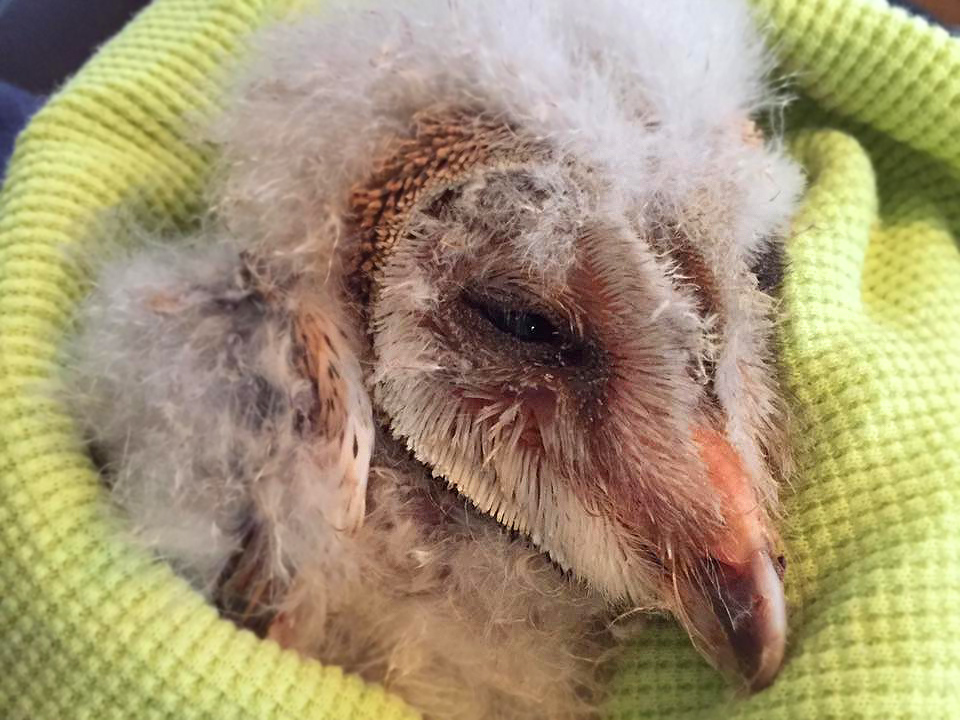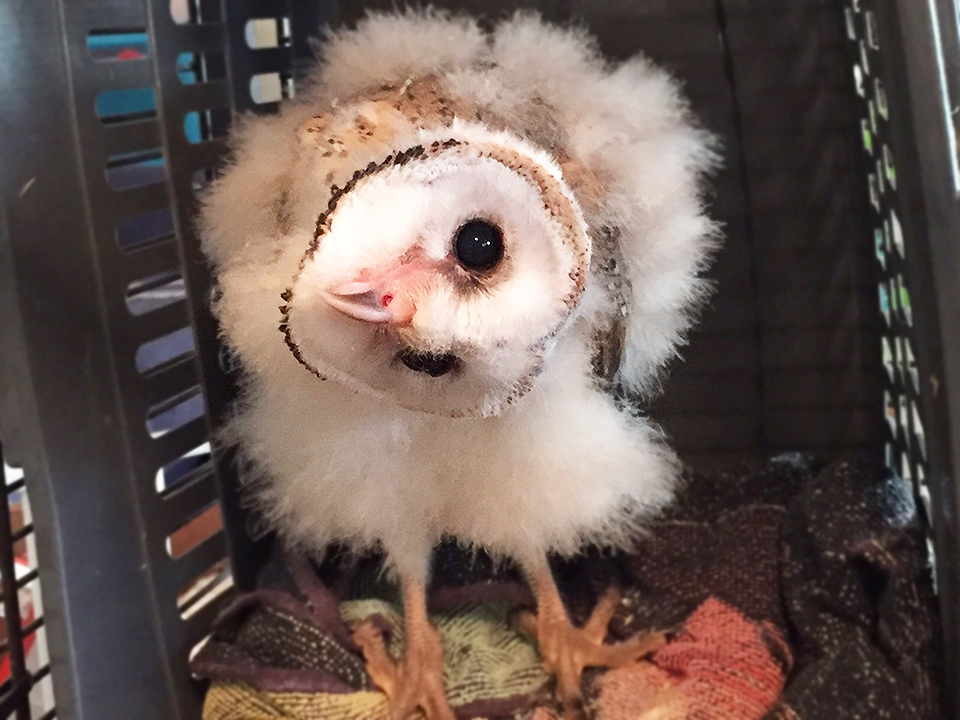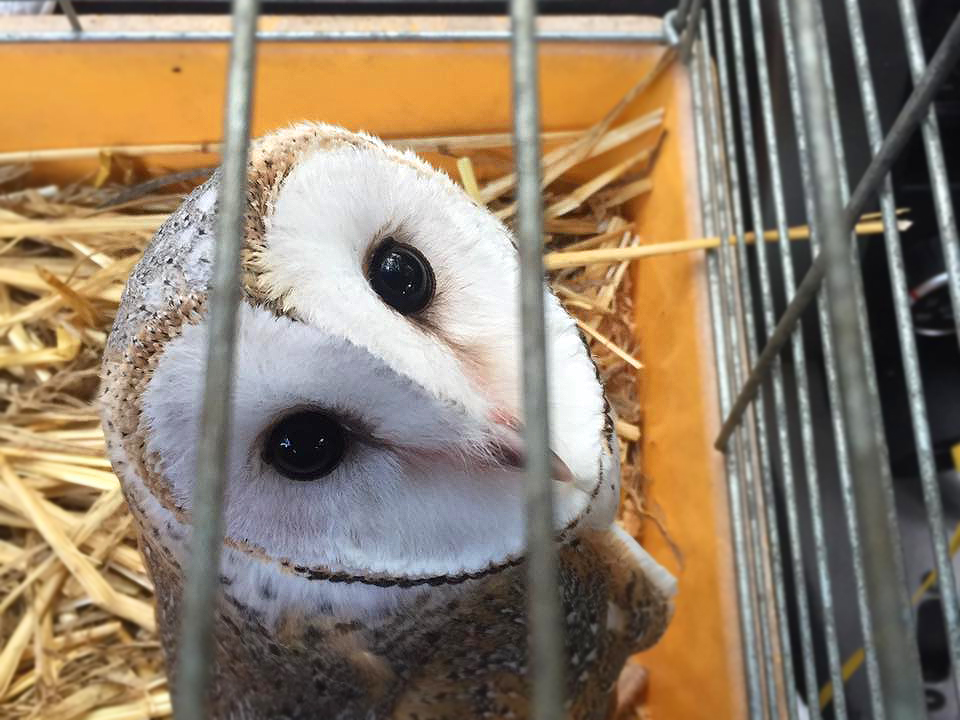Feathered Tales: hand-rearing Delta the barn owl
Gondwana Park Zoo’s senior reptile keeper, Chris, took a four-week old abandoned barn owl called Delta into his home. Chris and his family hand-reared Delta until such a time that Delta could join the zoo’s owl exhibit. He wrote a blog documenting the time he and his family spent with Delta as she grew in confidence and developed her natural ability.

Week 5
We picked Delta up from her previous carers at the local wildlife rescue centre. She had been rescued from a suburban backyard where she had been discovered taking shelter after her parents abandoned her. Delta came to us in a 20cm cubed box, which gives you an indication of how little she was. While she was in good health, she was too young to fend for herself and needed regular feeding and care.
We had never raised a barn owl before so we did some research to get husbandry guidelines for feeding and so we could provide Delta with a comfortable nest. We knew her needs in this area would change over time as she grew and matured. We were able to get some good information from the Barn Owl Trust and learned Delta should have adult plumage by 9-10 weeks.
Delta needed feeding every few hours. If we were ever late with feeds she would produce a horrible screeching-hiss noise or she would snap her beak. We would then snap into action! In the beginning Delta ate small pieces of day-old chick dipped in water as owlets don’t really drink from standing water and rely on getting water from the prey their parents bring them. We also made cubes of mince mix dusted with essential vitamin and calcium powders and offered to Delta via forceps.
On the third day Delta was transferred from her nesting box to a slightly bigger pet pack with straw as bedding. She was only really alert for feeds and spent the rest of the time sleeping with a towel covering her enclosure.
Week 6
Delta became more alert this week and was more interested in her surroundings so spent less time covered with the towel. She showed less interest in mince unless we left a few pieces on a dish for her, which she would then pick over at her own leisure. She continued to eat day-old chick pieces from forceps but by this point was eating half a chick at a time.
By the end of the week we moved Delta into a larger suspended aviary with straw substrate and an inverted basket as a nest box. Delta appeared very happy with her new digs and loved looking down on the family and taking in the world around her.
Week 7
This was a really big week for Delta’s development as she started jumping and trying to fly. We changed the layout of Delta’s enclosure so her nesting basket was elevated off the ground and she could jump in and out. We also put a few perches in the aviary at different heights so she could practise jumping from the ground to different heights and then between perches.
When we let Delta out, she would happily sit on a gloved hand and jump around the house exploring. The kids loved interacting with Delta at this time and would follow her around the house as she familiarised herself with her surroundings.
By the end of the week Delta was eating one day-old chick at a time, fed as two halves, along with large pieces of mince mix. We had, by this time, offered her a water bowl every now and again. She would dip her head in and splash around until she was completely wet and the water bowl was trashed.

Week 8
This week Delta’s jumping and flying self-education ramped up and she was now jumping onto the kids’ heads, which gave them a bit of a fright at first! We put a water dish in Delta’s enclosure permanently, which would get totally trashed with straw from all the jumping and flying so required regular cleaning and refilling.
Delta stopped eating mince and started eating the half chicks in one go. By the end of the week she was eating whole chicks and no longer needed them dipped in water. Gradually Delta settled into a routine of morning and night feeds.
Week 9
This week Delta achieved sustained flight and no place in the house was safe from her explorations. She started finding favourite spots such as the top of doorframes and bookshelves where she could sit and watch over the household. The speed Delta developed in flight along with her strong claws meant the kids became a little bit scared of her. They started wearing bike helmets for protection when Delta was let out and eventually we waited until the kids were in bed before giving Delta free reign of the house.
Delta continued eating whole chicks and we introduced whole mice into her diet. She’d eat one in the morning and one or two at night as she transitioned to a nocturnal diet.

Week 10
By now Delta was a competent flyer and eater. She had fully transitioned to a nocturnal diet and would eat a couple of adult mice or chicks at a time.
It was sadly time for us to farewell Delta as she left for her permanent home at Gondwana Park Zoo. Fortunately I can still see her whenever I want and the kids can visit on weekends and in school holidays.
Our family really valued the experience raising Delta and learning about the behaviour, diet and nature of a barn owl. We hope to rear more birds in the future. We miss Delta’s presence around the house and the kids have resumed wearing their helmets for riding bikes.
